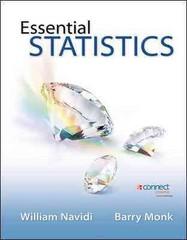Question
Explain all parts 1. A firm has the following production function: = 200 0.4 0.6 where Q = total output per day, K = machine
Explain all parts
1. A firm has the following production function: = 200 0.4 0.6 where Q = total output per day, K = machine hours per day and L = labour hours per day. The price of labour (w) is 30 per hour while the price of capital (r) is 10 per hour. The firm wants to minimise the costs of producing 2000 units of output per day.
a. Using the Lagrange method, find the cost minimising quantities of labour and capital to produce 2000 units of output per day. Show all working and clearly explain the economic reasoning.
b. What is the total cost of producing 2000 units of output per day using this cost minimising method? Show all working and clearly explain the economic reasoning.
c. What is the marginal cost of the firm producing an additional unit? Show all working and clearly explain the economic reasoning.
d. Assume the price of labour (w) falls from 30 to 20 while the price of capital (r) remains unchanged. Using the input demand function for Cobb-Douglas preferences (holding output constant) calculate the demand for labour and capital at this new lower price of labour. What is the total cost of using this new method production? Show all working and clearly explain the economic reasoning.
e. Assume now the total cost of production remains unchanged instead of total output. Using the relevant input demand function, calculate both (i) the cost minimising method of production and (ii) the output level, at the new lower price of labour.
f. Illustrate your answers to all the previous parts of this question on a clearly labelled isoquant/isocost diagram. In particular, illustrate and explain
. i. The intercepts and slope of the initial isocost. ii. The initial cost minimising method of producing 2000 units of output.
iii. The intercepts and slope of the isocost after the change in the price of labour, holding output constant at 2000 units
iv. The new cost minimising method of producing 2000 units after the change in the price of labour.
v. The intercepts and slope of the isocost after the change in the price of labour, holding total cost constant.
vi. The new cost minimising method of output holding total cost constant.
g. Using your answers to the previous questions, derive a demand curve for labour diagram from your isoquant/isocost diagram, holding output constant at 2000 units.
h. In reality the new cost minimising method of production is highly unlikely to be same as the answer to part 1e (i.e. holding total cost constant). Explain why this is the case and illustrate the implications on your isoquant/isocost diagram.
SHOW ALL WORKING OUT
Step by Step Solution
There are 3 Steps involved in it
Step: 1

Get Instant Access to Expert-Tailored Solutions
See step-by-step solutions with expert insights and AI powered tools for academic success
Step: 2

Step: 3

Ace Your Homework with AI
Get the answers you need in no time with our AI-driven, step-by-step assistance
Get Started


